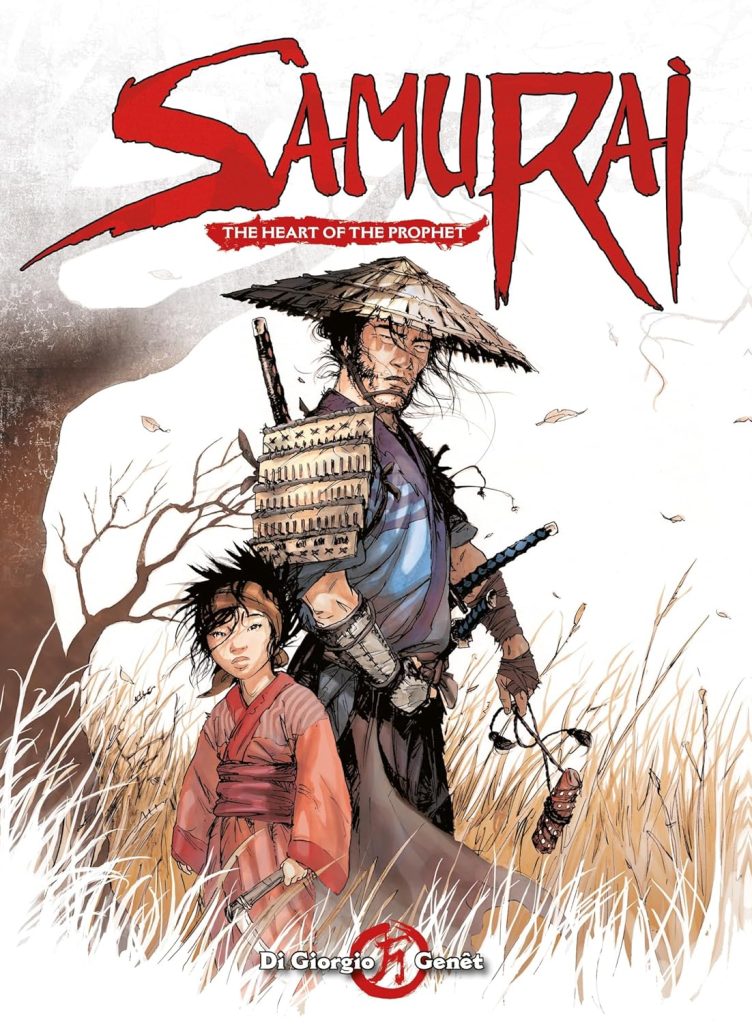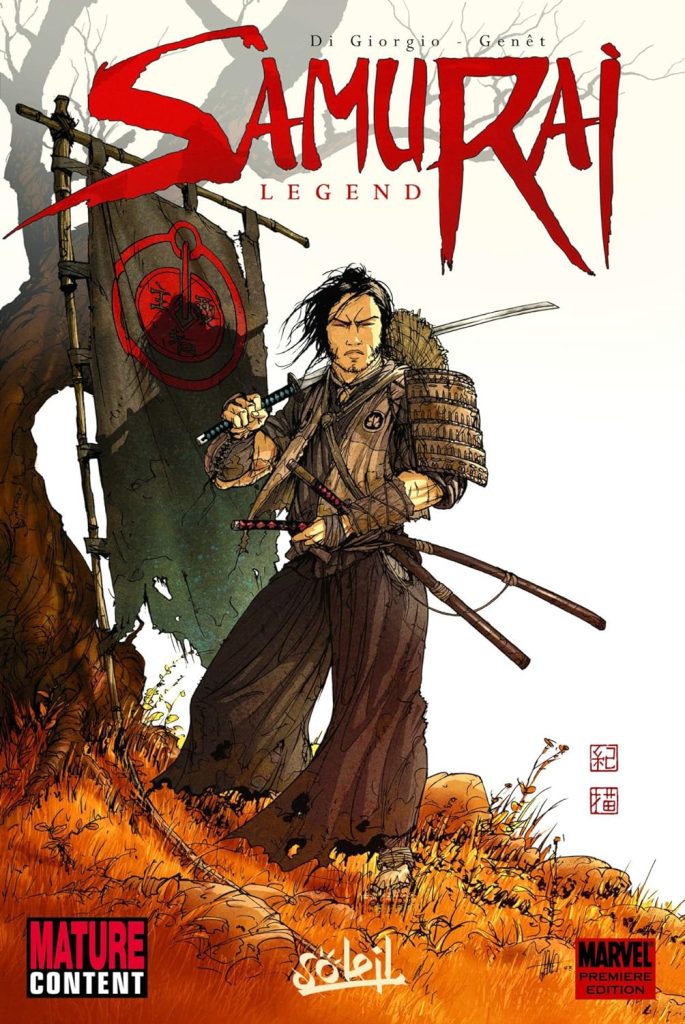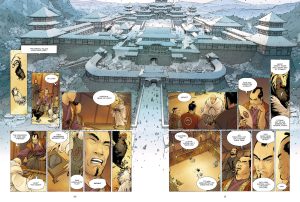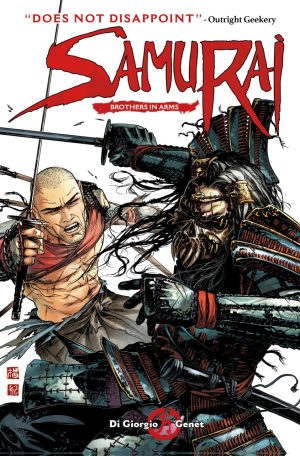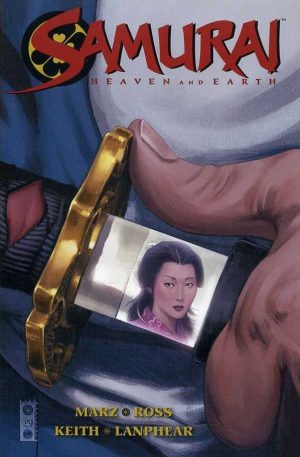Review by Frank Plowright
Samurai: The Heart of the Prophet filters the manga standby of the lone swordsman through European sensibilities for a stunning looking package combining the first four albums released in France between 2005 and 2008. It’s the same material previous published in a slightly smaller format by Marvel as Samurai: Legend in 2009, but more care is taken with the production of the Titan collection.
The immediate attraction is the astonishingly good art. Frédéric Genêt uses an enviably delicate line, pays extraordinary attention to detail and choreographs movement exceptionally well. His people are occasionally a little distorted, but they’re stylistically consistent, and it can be emphasised by Genêt’s preference for viewpoints looking down on or up to people. A more noticeable stylistic feature is building a page around a strong single image as per the sample art, although it’s from the digital version and there’s an inevitable fold down the centre of the book. Such spreads recur throughout, and when they involve battles the detail is beyond belief, the final stramash requiring a three page foldout. The work ethic extends to the cinematic approach overall, Genêt using multiple small panels on each page, yet each a fully detailed composition.
Genêt’s artwork is elevated by sophisticated colouring from Delphine Rieu, far more subtle and thoughtful than the colour work on most European graphic novels of the early 21st century. A lurid green indicating a menacing area is especially effective, and flashbacks are indicated by a sepia overlay.
While enough minor questions hang to have Samurai continue into The Isle With No Name, Jean-François Di Giorgio provides a complete story over this collection, starting with the discovery of evil and ending with its destruction. There’s mystery about Takeo, the lone Samurai raised in a monastery to become a master swordsman and astute tactician, but the bigger mystery concerns a young girl able to solve an impossible puzzle, and needing the Samurai’s protection from agents of evil, one of whom is stunningly designed, but perhaps a little too closely to a Predator. In the only misjudgement Di Giorgio makes, Takeo is accompanied by a servant intended as comic relief, but overplayed as a bumbling whiner who’s irritating rather than amusing.
Tightly plotted and stunningly realised, few series start this strongly. Wonderful.
